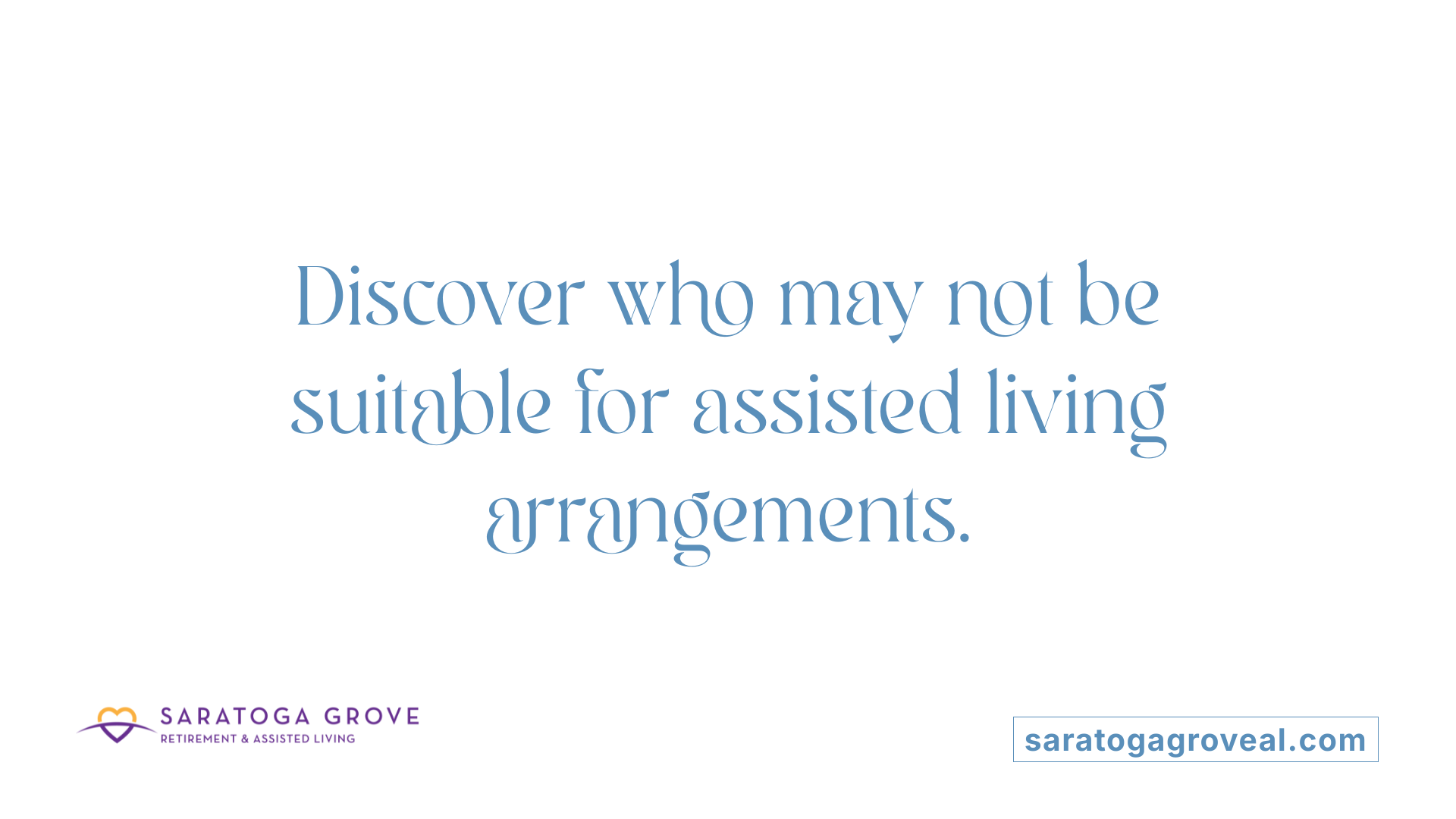
Independent Living vs. Assisted Living: Which is Right for Your Loved One?
March 27, 2025
Deciding Between Independence and Assisted Care for Your Loved Ones
Understanding Senior Living Options
Choosing the right senior living arrangement for a loved one can be a daunting decision, encompassing a range of factors from health care needs to lifestyle preferences. Understanding the distinctions between independent living and assisted living is crucial in making an informed decision that ensures comfort, safety, and well-being.
Defining Independent and Assisted Living

What are the differences between independent living and assisted living for seniors?
The distinctions between independent living and assisted living are crucial for individuals and families evaluating care options for seniors. Assisted living facilities provide essential support with activities of daily living (ADLs), such as bathing, grooming, and medication management. In contrast, independent living caters to seniors who are largely self-sufficient and do not require constant personal assistance.
Differences in service offerings
In terms of service, assisted living communities offer a comprehensive package that includes:
- Personal Care: Assistance with bathing, dressing, and other daily tasks.
- Health Monitoring: Regular checks and medication management.
- Social Interaction: Staff-run activities tailored for residents' varying needs.
On the other hand, independent living emphasizes a maintenance-free lifestyle, featuring:
- Housing: Apartments or homes designed for active seniors without hands-on care needs.
- Community Amenities: Services like housekeeping, meals, and transportation are typically available but less intensive.
- Social Activities: Focus on engagements like outings and events to foster community bonds.
Primary focus of each living arrangement
The primary focus of assisted living is to offer personalized care while promoting dignity and autonomy for seniors needing daily assistance. Independent living, however, is structured for those who prefer an active, engaging lifestyle without intensive health services. This setting reduces family caregiving responsibilities, allowing family members to participate in leisure activities instead of handling caregiving tasks.
In summary, understanding these differences enables seniors and their families to make informed choices about their living arrangements, aligning their needs with the right community.
When to Transition from Independent to Assisted Living

When should a senior consider moving from independent living to assisted living?
A senior may need to consider transitioning to assisted living when they start requiring support with several activities of daily living (ADLs). This includes help with tasks such as bathing, dressing, and managing medications.
Some telltale signs that more supportive care is necessary include:
- Weight Loss: Noticeable and unexplained weight loss can signal difficulty in preparing meals or maintaining proper nutrition.
- Poor Hygiene: Neglecting personal hygiene is a major indicator that daily assistance is needed.
- Increasing Forgetfulness: Memory lapses may lead to missed medications or appointments, signaling the need for more structured support.
- Unexplained Bruises: Frequent bruises can indicate falls or accidents, posing safety concerns within their living space.
- Loneliness and Isolation: If a senior expresses feelings of loneliness or disconnection, moving to an assisted living community can provide not only support but also social engagement.
Involving family in this discussion is crucial. They can help recognize these changes and recommend options. It's also beneficial to consult a healthcare professional who can provide insights and recommendations based on the senior's health status.
Furthermore, engaging the senior in these conversations fosters a sense of autonomy and ensures their preferences are taken into account during the transition. This can help ease the shift to a new living environment that balances both care and community support.
Who Should Avoid Assisted Living

Who is not appropriate for assisted living?
Assisted living is not suitable for everyone. This type of community is designed for seniors who require assistance with at least two activities of daily living (ADLs), such as bathing, grooming, or medication management. Ideal candidates are typically stable and do not need extensive nursing or rehabilitation services.
However, individuals who require continuous supervision or have severe medical conditions such as significant memory impairments, extensive mobility issues, or those who are bedridden should consider other care options. Assisted living facilities are not equipped to handle round-the-clock medical attention or intensive care needs.
For seniors whose conditions demand more specialized care, memory care facilities or nursing homes can be better options. These environments provide the high level of medical oversight and support necessary for individuals with severe or unpredictable health conditions.
Alternative care options for high-need seniors
When traditional assisted living no longer meets the requirements of seniors, it's essential to explore alternative housing options. Below are some alternatives:
| Care Type | Description | Best Suited For |
|---|---|---|
| Memory Care | Specialized care for individuals with Alzheimer’s or dementia | Seniors needing daily comprehensive medical care |
| Nursing Homes | 24/7 medical supervision and round-the-clock staff | Seniors with chronic illnesses or recovery needs |
| In-Home Care | Care provided in the individual’s own home | Seniors who prefer their home environment |
| Palliative Care | Focus on comfort and quality of life for serious conditions | Seniors with serious illnesses requiring support |
For families considering appropriate living arrangements for their seniors, understanding the spectrum of care needs is critical.
Financial Considerations of Assisted Living

Costs Associated with Assisted Living
The financial burden of assisted living can weigh heavily on families. The median national cost for assisted living is approximately $4,995 per month, significantly higher than the average $3,100 for independent living. The price difference is primarily due to the additional care services provided in assisted living communities, such as help with activities of daily living, medication management, and personal hygiene assistance.
Many families may not initially anticipate the total costs, which can escalate depending on the level of care required. This reality can lead to financial strain as families navigate these expenses. It's essential to assess not just the monthly fees but also the additional costs that might arise, such as medication and therapy.
Insurance and Medicaid Coverage Options
When considering financial support, various options may be available, though they can be complex. Many families explore Medicaid and insurance coverage, but it’s crucial to understand their limitations. Medicaid can help cover some costs for those who qualify, but eligibility requirements vary by state. Not every assisted living community accepts Medicaid, so verifying the facility’s policies is essential.
Insurance coverage for assisted living is typically limited. Long-term care insurance may provide financial aid, but not all policies cover the costs associated with assisted living facilities. Families often find themselves in a challenging situation where they must balance the necessary care with their financial capabilities.
Drawbacks of Assisted Living
One of the significant drawbacks of assisted living is its high cost, which can create financial stress for seniors and families. Additionally, while assisted living offers valuable support, it often lacks comprehensive medical care for residents with extensive health needs. Privacy may also be an issue, as communal living can affect residents’ sense of personal space. These combined factors can deter potential residents from choosing assisted living.
Comparing Costs: Independent vs Assisted Living

How do the costs compare between independent living and assisted living?
The costs of independent living and assisted living vary significantly due to the range of services offered in each option. As of 2024, the nationwide median monthly cost for assisted living is approximately $4,995, whereas independent living averages around $3,100 per month. This variance in cost is attributed to the extensive support services that assisted living provides, including help with activities of daily living (ADLs), meal services, and housekeeping.
In assisted living communities, seniors receive personalized assistance that may include support for bathing, dressing, and medication management. These personalized care services are essential for those who require a higher level of assistance, which naturally elevates the monthly costs.
On the other hand, independent living focuses on providing a residential lifestyle for self-sufficient seniors. While residents benefit from communal amenities and a maintenance-free environment, they do not receive daily personal care assistance. This lack of hands-on support is a significant factor contributing to the lower monthly costs, which typically range from $2,000 to $3,500 depending on the amenities offered.
What about coverage of costs?
Furthermore, costs related to assisted living may be partially covered by long-term care insurance and some Medicaid plans, providing financial relief for those who qualify. In contrast, independent living is generally not covered by Medicaid or Medicare, making it essential for potential residents to evaluate their financial options carefully.
| Living Option | Median Monthly Cost | Services Provided |
|---|---|---|
| Assisted Living | $4,995 | ADL assistance, meals, housekeeping, medical supervision |
| Independent Living | $3,100 | Housing, meals (often extra), community events |
Both living arrangements foster community and companionship, which are vital for seniors' overall well-being. However, understanding these cost structures is crucial for individuals and families as they navigate the options suited to their care needs.
Understanding Independent Living
Services and Amenities Exclusive to Independent Living
Independent living communities cater to seniors who value their independence and require minimal assistance. These facilities typically offer a range of services and amenities designed for an active and engaging lifestyle. Common features include:
- Housekeeping Services: Regular cleaning and maintenance of living spaces.
- Meal Options: While some communities provide dining services, residents may pay extra for meals, allowing for flexibility based on personal preferences.
- Transportation Services: Many independent living facilities offer scheduled transportation for outings, grocery shopping, or medical appointments.
- Social Activities: Programming often emphasizes community interaction, with social events and outings that foster companionship among residents.
- Maintenance-Free Living: Residents enjoy a hassle-free lifestyle where yard work and home repairs are managed by facility staff.
Ideal Candidates for This Type of Living Arrangement
Independent living is best suited for self-sufficient seniors who do not require hands-on care or regular medical supervision. These individuals typically maintain an independent lifestyle while seeking the camaraderie of a community. Characteristics of ideal candidates include:
- Active Lifestyle: Seniors looking to engage socially and participate in community activities.
- Minimal Health Concerns: Individuals who can manage their healthcare independently without needing regular assistance.
- Desire for Autonomy: Residents who wish to retain their independence while enjoying the security of a community.
Overall, independent living communities provide seniors with a vibrant living option that supports their lifestyle choices while ensuring they have access to necessary resources.
The Benefits of Assisted Living Communities
Services Leading to Enhanced Well-Being
Assisted living communities provide a range of essential services that significantly contribute to the well-being of their residents. These facilities offer assistance with activities of daily living (ADLs), such as bathing, dressing, and medication management. This support allows seniors to maintain their dignity and independence while receiving the necessary care they require.
With trained staff available 24/7, residents receive the reassurance of personal care tailored to their individual needs. Additionally, many assisted living facilities include meal services, housekeeping, and wellness programs, which help residents focus on living fulfilling lives instead of worrying about daily chores or health management.
Community and Socialization Advantages
Social interaction is a crucial aspect of wellness, particularly for seniors. Assisted living communities facilitate a vibrant social atmosphere with various activities designed to engage residents. These can include group outings, exercise classes, and arts and crafts, all tailored to enhance community spirit and reduce feelings of isolation.
Unlike independent living, which may offer fewer social activities, assisted living communities focus on creating a supportive environment. This environment encourages strong relationships among residents and staff, fostering a sense of belonging that further promotes mental and emotional health. By prioritizing both care and community, assisted living effectively enhances the quality of life for seniors.
Community Life and Social Activities
Role of socialization in both living options
Socialization is an essential aspect of life in both assisted living and independent living communities. These environments are designed to foster community and companionship among seniors, helping to reduce feelings of isolation and loneliness.
In both types of communities, residents have opportunities to engage with others, participate in activities, and develop friendships. Such interactions are vital for emotional and mental health, enhancing the overall well-being of seniors.
Variety of activities available
Both living options offer a range of social activities, but they differ in focus and nature:
| Living Option | Activity Focus | Types of Activities |
|---|---|---|
| Assisted Living | Personal care integration | Staff-led activities, wellness programs, and social gatherings |
| Independent Living | Engagement and independence | Community outings, workshops, and fitness classes |
Residents in assisted living benefit from structured activities, while independent living often emphasizes self-directed events and social gatherings. Both promote enriching experiences that enhance quality of life.
Assessing Healthcare Features
Availability of Care Services
When evaluating senior living options, the availability of care services is a decisive factor. Assisted living communities provide essential support with activities of daily living (ADLs) such as bathing, dressing, and medication management. This is crucial for seniors who require regular assistance to maintain their independence.
In contrast, independent living communities cater to active seniors who are self-sufficient and do not need personal assistance. They offer a more maintenance-free lifestyle, focusing on social engagement and community activities rather than daily healthcare needs.
Differences in Health Monitoring
Health monitoring also varies widely between these two types of living arrangements. Assisted living facilities typically include health oversight and staff support available 24/7. They are equipped to assist with health-related issues as they arise, ensuring residents receive the necessary care promptly.
Conversely, independent living residents manage their own healthcare needs, relying on external healthcare providers as needed. This distinction impacts the daily routine significantly, influencing the choice of community based on individual care requirements.
Amenities and Lifestyle Preferences
Range of Amenities in Independent vs Assisted Living
When comparing amenities between independent and assisted living communities, distinct differences emerge. Independent living facilities typically focus on providing a maintenance-free lifestyle. Common offerings may include:
- Housekeeping services
- Transportation options
- Social events and community outings
- Access to fitness and wellness centers
In contrast, assisted living communities offer more comprehensive services aimed at supporting residents with daily living needs. These often include:
- Three daily meals
- Personal care assistance (bathing, dressing)
- Medication management
- Health monitoring and 24/7 caregiver availability
How Lifestyle Preferences Influence Choice
The choice between independent and assisted living is significantly influenced by lifestyle preferences. Active seniors who value independence without the need for ongoing care typically gravitate towards independent living. They benefit from an engaging environment with social activities tailored for interaction and community building.
On the other hand, seniors requiring assistance with daily activities will find assisted living more suitable, as it combines care with independence, allowing residents to maintain dignity. The choice between the two ultimately depends on an individual’s health needs and desire for social engagement.
Family Involvement and Support
Impact on Family Caregiving Responsibilities
In both assisted living and independent living communities, family involvement is highly encouraged. However, the nature of the support required varies significantly.
Residents in assisted living communities often need help with activities of daily living (ADLs), which alleviates family members from routine caregiving tasks such as bathing or medication management. This allows family visitors to focus on spending quality time with their loved ones, rather than managing their day-to-day care.
Encouragement of Family Participation
Independent living communities also promote family participation but in different ways. Families can engage in social events and activities alongside their loved ones, bolstering community ties. Because residents in independent living manage their health independently, families may take part in planning social outings or community functions, which enhances their connection to the community.
Both settings aim to foster a supportive environment that encourages family relationships while balancing care needs and personal independence.
Choosing the Right Facility
Factors to consider when selecting a community
When deciding between assisted living and independent living, there are several crucial factors to take into account.
- Care Needs: Assess personal care requirements. Those needing assistance with daily activities such as bathing or medication management should consider assisted living. In contrast, if the individual is self-sufficient and only needs a community environment, independent living may be ideal.
- Cost: Financial considerations play a vital role. Assisted living averages around $4,500 per month, while independent living typically costs between $3,000 and $3,600 monthly. Ensure that the chosen option fits within the budget and consider long-term financial plans.
- Lifestyle Preferences: Think about the desired lifestyle. Independent living offers a maintenance-free life with more opportunities for active socializing, whereas assisted living provides structured support and social activities centered around individual care needs.
Balancing needs, costs, and lifestyle in decision-making
Finding the balance between care requirements, costs, and lifestyle is essential. Create a checklist prioritizing care needs over amenities. Consider potential changes in health or mobility that might necessitate additional support later on.
As you evaluate communities, visit potential facilities to gauge the environment, staff interactions, and overall vibe.
Map out a plan of how each option aligns with personal preferences and anticipate future needs for enhanced peace of mind.
Both living arrangements offer valuable community support, but making an informed choice ensures a comfortable and fulfilling transition.
Navigating the Transition
Strategies to ease the move
Transitioning to a new living environment can be daunting for seniors and their families. Here are some effective strategies to make the move smoother:
- Plan Ahead: Start planning early to identify the right living arrangement based on care needs, organizing logistics for the move, and managing belongings.
- Involve the Senior: Allow them to participate in the decision-making process. This includes selecting which items to bring and any personal touches to their new space.
- Utilize Professional Help: Consider hiring moving services experienced with senior relocation. They can manage the heavy lifting and logistics.
Supporting emotional and practical adjustments
Emotional support is just as critical during this transition. Here are ways to assist:
- Regular Visits: Family visits can help ease feelings of loneliness in a new environment.
- Foster Community Connections: Encourage participation in community activities to help seniors build new friendships.
- Address Concerns: Always be available to listen to their worries and provide reassurance about their new living situation.
By addressing both the practical and emotional aspects, the transition to assisted or independent living can become a positive experience.
Making the Informed Choice for Senior Living
Choosing between independent and assisted living involves careful consideration of a senior's health needs, lifestyle desires, and the family's financial capabilities. By understanding the differences and evaluating the pros and cons of each option, families can make well-informed decisions that align with their loved one's well-being and aspirations for community life.
References
- Assisted Living vs. Independent Living - A Place for Mom
- Independent vs. Assisted Living — 5 Key Differences - Arbor Company
- Assisted Living vs Independent Living: Which is Right For You? | Hero
- Independent Living vs. Assisted Living: Which Is Best? - Weatherly Inn
- Seniors: Who Qualifies for Assisted Living (Eligibility and More)?
- 11 Signs It Might Be Time for Assisted Living - A Place for Mom
- Caregiver Resources and Support - A Place for Mom
- 6 Steps for When Parents Need Assisted Living - A Place for Mom
- 10 Signs Your Elderly Parent Needs Help - A Place for Mom
- Assisted Living vs. Independent Living - A Place for Mom



































































































